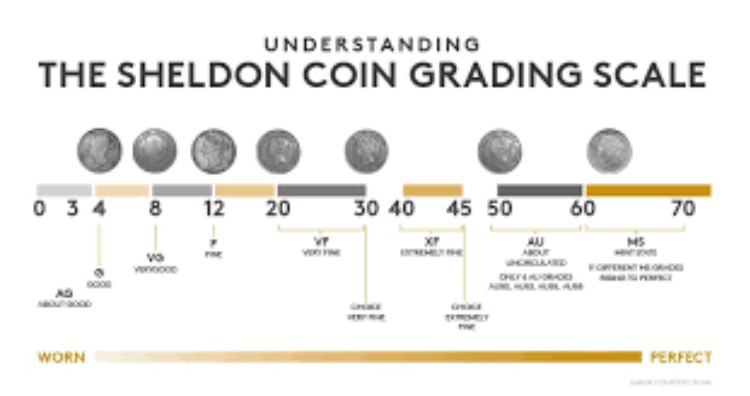How to evaluate the condition of a collectible coin

Coin collecting is an exciting and fascinating hobby that has been enjoyed by people for centuries. Collectors are constantly on the lookout for new additions to their collection, but how can they evaluate the condition of a coin to determine its value? Here are some tips to help you evaluate the condition of a coin for coin collecting.
1. Study the Coin
Before you start evaluating the condition of a coin, it is important to study it carefully. Look for any distinguishing features, such as mint marks or dates, that can help identify the coin. Check the coin’s surface for any signs of wear and tear, scratches, or dents. The better you know the coin, the better you’ll be able to evaluate its condition.
2. Grading System
The Sheldon Scale grading system is the standard used by coin collectors to evaluate the condition of coins. The grading system ranges from poor to mint condition, with several grades in between. Each grade has a specific set of criteria that must be met to qualify for that grade. The Sheldon scale is a system used to grade the condition of a coin. It was created by Dr. William Sheldon in 1948 and is still widely used by coin collectors and dealers today. The Sheldon scale ranges from 1 to 70, with 1 being the lowest grade and 70 being the highest. Each grade is based on a specific set of criteria, including factors such as the amount of wear and tear on the coin’s surface, the visibility of details, and the overall appeal of the coin. The Sheldon scale has become the industry standard for coin grading and is recognized by most major coin grading services. By using this system, collectors and dealers can accurately evaluate the condition of a coin and determine its value.
3. Eye Appeal
Eye appeal is an important factor to consider when evaluating the condition of a coin. Eye appeal refers to the overall appearance of the coin, including its luster, color, and surface quality. A coin with a dull appearance or noticeable damage may have a lower eye appeal, which can affect its value.
4. Coin Preservation
The condition of a coin can be affected by how it has been stored and preserved over time. Coins should be kept in a dry, cool environment to prevent damage from moisture, heat, or sunlight. Avoid handling coins with bare hands, as the oils and acids in your skin can damage the surface of the coin.
5. Market Value
6. Determine if the coin has been cleaned
Detecting whether a coin has been cleaned or not can be a challenge, especially if the cleaning was done skillfully or if the coin has been in circulation for a long time. However, there are a few signs to look for that may indicate that a coin has been cleaned:
- Shiny or glossy appearance: A coin that has been cleaned may have a shiny or glossy appearance that is not typical of a coin that has been in circulation for many years. This is because the cleaning process can remove the natural patina and luster of the coin, leaving behind a smooth and shiny surface.
- Hairlines or fine scratches: Cleaning a coin can sometimes leave behind hairlines or fine scratches on its surface. These marks are usually visible under magnification and are a telltale sign of cleaning.
- Chemical residue: If a coin has been cleaned using chemicals, it may have a residue that is visible under magnification or with the naked eye. The residue can appear as small spots or discolorations on the coin’s surface.
- Unnatural color: A coin that has been cleaned may have an unnatural color, such as a bright or overly shiny appearance, or a dull or grayish appearance. This is because the cleaning process can alter the surface of the coin, affecting its natural color and tone.
- Abrasive marks: If a coin has been cleaned using abrasive methods, such as rubbing or scrubbing, it may have visible marks or scratches on its surface. These marks can be seen under magnification and can affect the coin’s grade and value.
It’s important to note that some coins may have been cleaned professionally and can still retain their original appearance and value. However, in general, it’s best to avoid cleaning coins unless absolutely necessary, as it can lower their value and authenticity. If you are unsure about the condition of a coin, it’s best to consult with a professional coin grader or collector.
Finally, it is important to consider the market value of the coin when evaluating its condition. The value of a coin can fluctuate based on factors such as rarity, demand, metal content, weight and condition. It is important to do research and consult with experts to determine the current market value of a coin before making a purchase or selling it.
In conclusion, evaluating the condition of a coin is an essential skill for any coin collector. By studying the coin, using the grading system, considering eye appeal and coin preservation, and researching the market value, collectors can make informed decisions about the value and potential additions to their collection.
If you need help identifying the value of a coin Click Here for a free evaluation
« « Best way to sell old coins | Why You Should Never Clean a Collectible Coin: The Risks and Consequences » »
Categories:
Tags Cloud:
Authenticity Cleaning coins Coin collecting Coin evaluation Coin grading Coin preservation Eye appeal Market value Sheldon Scale Value of a coin



